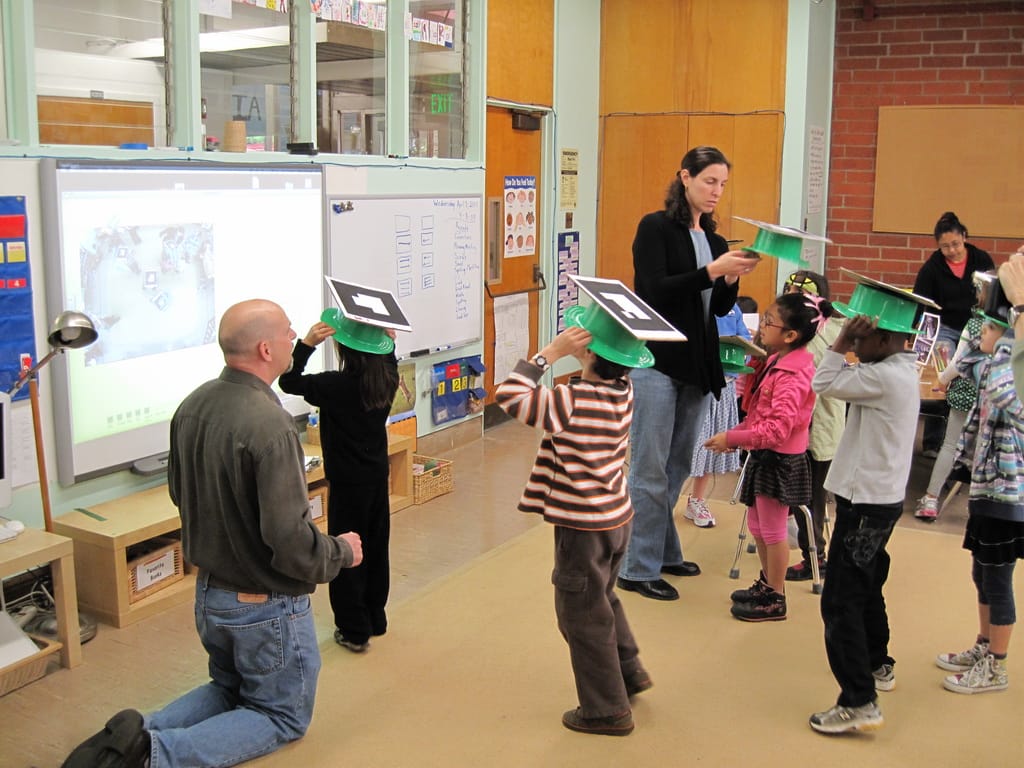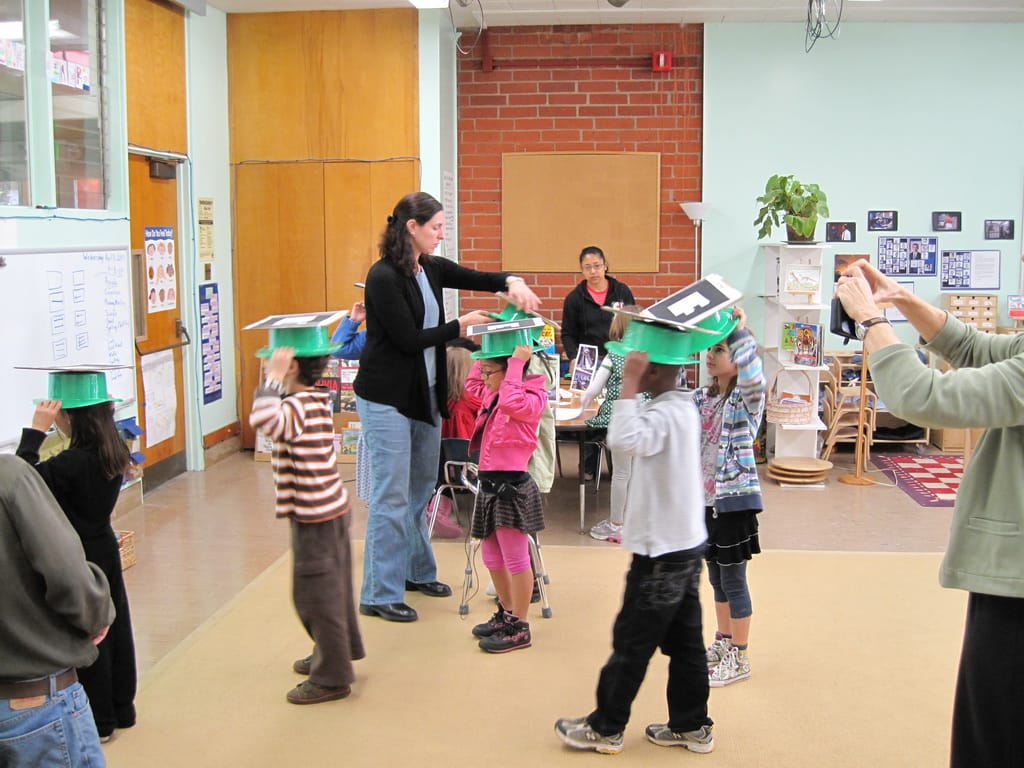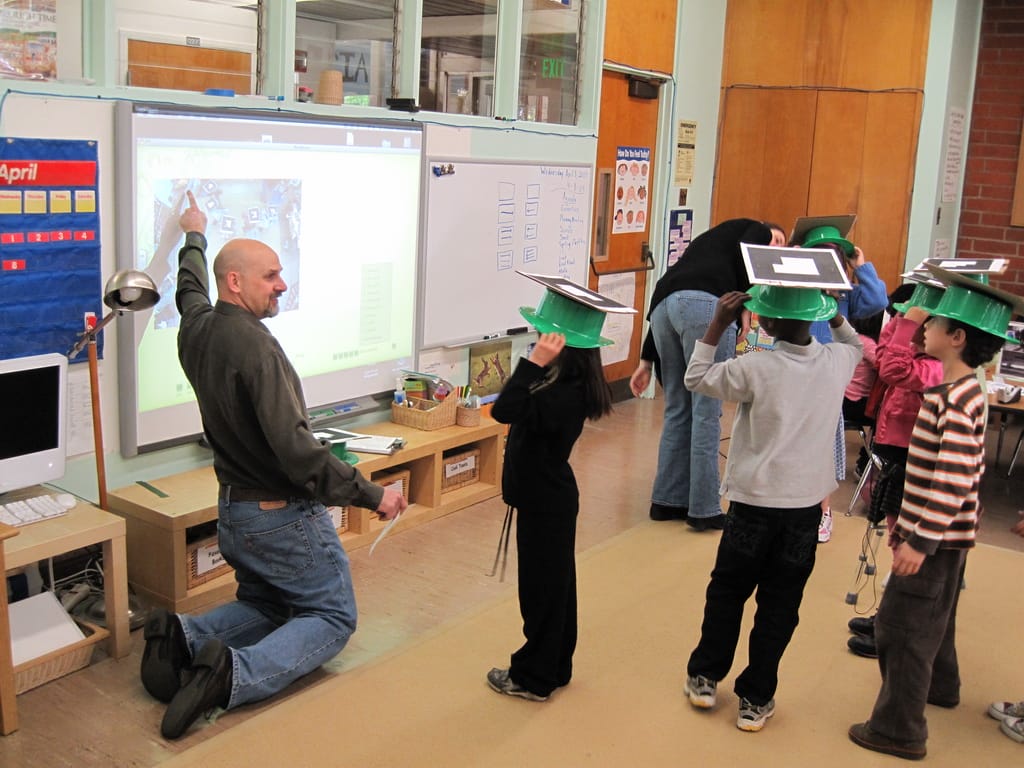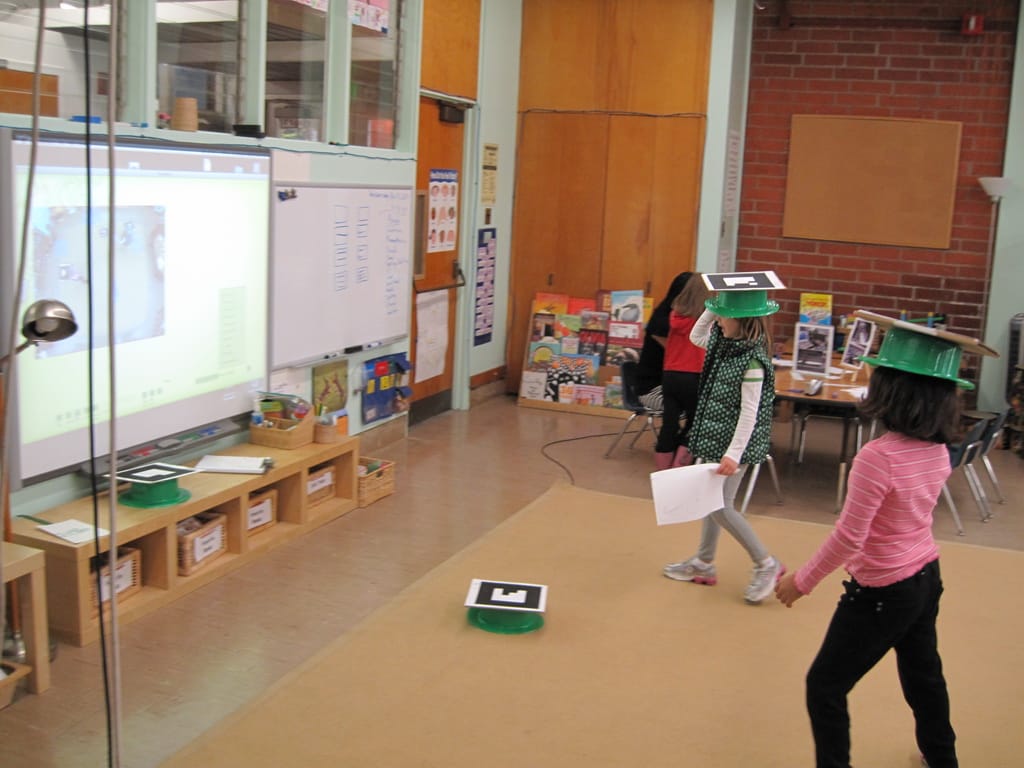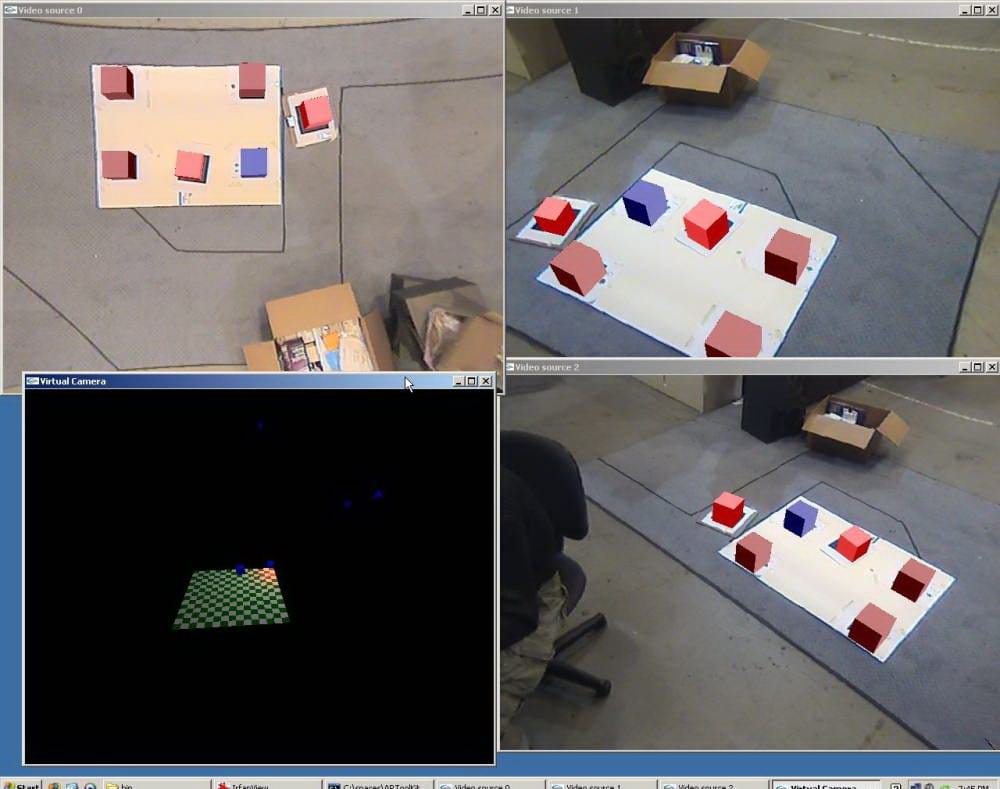Using computer vision, Wii remotes, RFID tags, and other sensing technologies, SPASES aimed to engage first and second graders in learning the physics of force and motion. Similar to recent work in middle schools, the project used the students’ physical actions as an interface to computer simulations.
Younger students are good at pretend play. It is fun, but most significantly, it contains imaginary situations and sets of rules. Like play, the physical world (and computer simulations of force and motion) follows rules. SPASES used computer-enhanced, embodied play as a means for children to uncover the hidden rules of the physical world.
SPASES was a collaboration between UCLA REMAP and Dr. Noel Enyedy, Joshua Danish and Girlie Delacruz (UCLA Education and Information Studies). It was an important predecessor of the STEP project.
STEP project website: http://sttep.org/.
Supported by the National Science Foundation.
2007-2009.
Click any image for a larger view:
